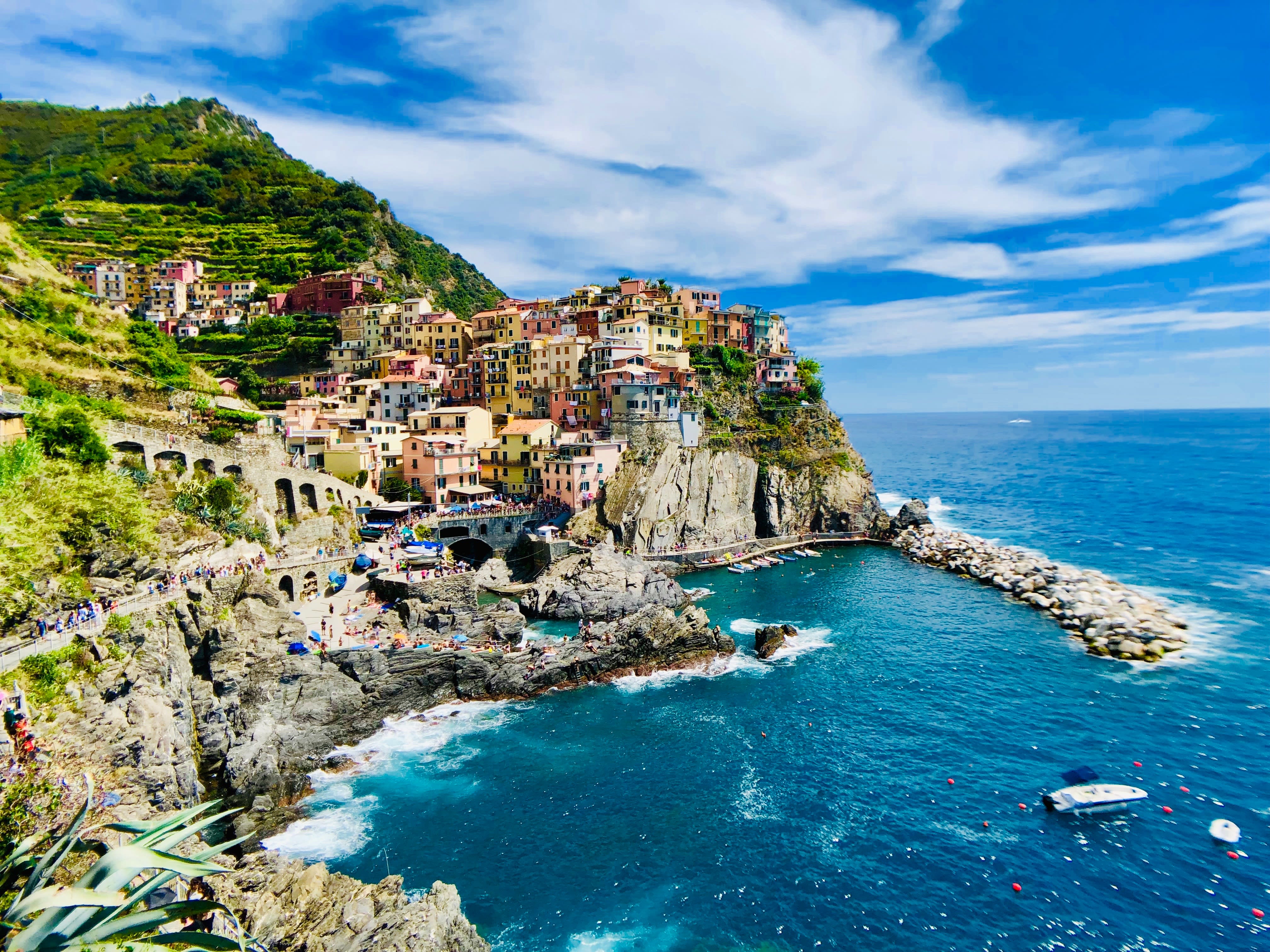Italy
Overview and productions
The sultry climate, professional crews and the world’s largest number of Unesco World Heritage sites —together with a generous tax credit and 19 regional film commissions vying to offer plentiful funding — make Italy extremely appealing to international productions.
“Professionalism, combined with Italy’s three Fs — fashion, food and furniture — and a 40% tax credit, though not necessarily in that order of importance [attract shoots],” says Marco Valerio Pugini, who supports incoming international productions as president of Italy’s Association of Production Services Companies. In addition, the territory offers filmmakers “250 days of sun, a diversity of locations it is rare to find anywhere else, including mountains, coastlines, lakes, plains, villages, historical and modern cities”, he adds.
Among recent projects to visit Italy are Roland Emmerich’s Ancient Rome gladiator series Those About To Die; Joe Wright’s Mussolini series M. Son Of The Century; Luca Guadagnino’s Challengers, starring Zendaya; and the same director’s Fremantle-backed adaptation of William S Burroughs’ Queer, starring Daniel Craig. Also choosing to film in Italy are Angelina Jolie’s Without Blood, which was financed by Fremantle and took in Rome’s iconic Cinecitta Studios as well as the southern region of Puglia; Paolo Sorrentino’s untitled new feature, which is filming in and around Naples with Gary Oldman; the fourth series of My Brilliant Friend starring Alba Rohrwacher; the second season of Epix’s Domina; and Netflix’s The Decameron, which shot in Rome and nearby Viterbo.
In addition, Steven Zaillian chose Italy to film Ripley, a TV version of the Patricia Highsmith crime novels starring Andrew Scott, while All Quiet On The Western Front’s Edward Berger shot conspiracy thriller Conclave, starring Ralph Fiennes, John Lithgow, Stanley Tucci and Isabella Rossellini, in the Bel Paese.
First person to contact: Francesca Rotondo, Cinecitta Studios: f.rotondo@cinecittaluce.it and sales@cinecitta.it

Gallery
Locations and permits
Italy has many “wonderful locations to fulfil any kind of request”, insists Federica Mugavero, assistant producer at local outfit Recalcati Multimedia, which recently shot an ad campaign for drinks company P31.
There’s everything from the spectacular Amalfi coast to the beautiful historic cities of Rome, Florence and Venice, and from the striking snowy Alps to the Tuscan hill towns.
With these wonderful locations, many productions choose to shoot Italy as itself, but it can also easily double for other countries. The south can double for Greece, while Rome and Milan can be shot for Paris and New York, Naples and Matera for Jerusalem, and there are desert settings in the quarries around Rome.
“If you shoot on the Sardinian coast, as we have done, the seaside is just so amazing that it can double for the Caribbean or any exotic place,” enthuses Claudio Pintus, executive producer at local production service outfit Dude Film.
Following Covid-19 restrictions, productions have been getting back into full swing (albeit under tight protocols supervised by Covid managers), and it is possible to secure permits again.
It is important to note, however, that procedures and regulations vary from one city and province to another, so it is best to get in touch with them ahead of the shoot and “request a permit seven to 10 days before you start,” says Pintus.
Local know-how is paramount for productions and some locations, such as Vatican City and Rome’s Roman Forum, are near-impossible to film. But local production companies can advise on affordable and accessible alternatives.
Italy has a reputation for being an expensive place to film but producers report costs are often competitive with Spain. Indeed, the 16 regional film commissions from Turin to Sicily are all keen to host international crews and boost investment after what has been a difficult few months with the pandemic.
Infrastructure and crews
International production services and crew providers include Lux Vide (which is investing in its production facilities having been bought by Fremantle in 2022), Panorama Films, Cattleya, FPC, Lotus Production, 360 Degrees Film and Mestiere Cinema, all of which provide support that ranges from authorisation requests and permit provisions through to full-scale production, filming and location services.
The $315m (€300m) revamp of Rome’s Cinecitta Studios has transformed it into one of Europe’s leading complexes. It plans to expand its infrastructure to 24 studios by 2026.
Travel and logistics
Italy is a peninsula of 300,000 square kilometres. Mountains make travelling between regions easiest by plane. Each region has its own film commission. The least red tape can be found in northern Italy while Roma Lazio Film Commission is the most experienced in working with international productions.
Travel and transport services are fast, with an efficient rail network connecting north to south.
Size matters
Italy stretches for more than 1,100 kilometres from the northern Swiss border to the southern Mediterranean coast, encompassing an area that exceeds 300,000 square kilometres. Its extensive coastline spans 7,600 kilometres, with a wide array of adaptable landscapes.
The nation is home to two sovereign entities within its borders — the Republic of San Marino and Vatican City — and boasts swift travel and transportation services, facilitated by a highly effective rail system that connects the northern and southern regions.
European status
Italy is a member of the EU and is part of the Schengen Agreement. Its currency is the euro.
Sign up for newsletter
Newsletter